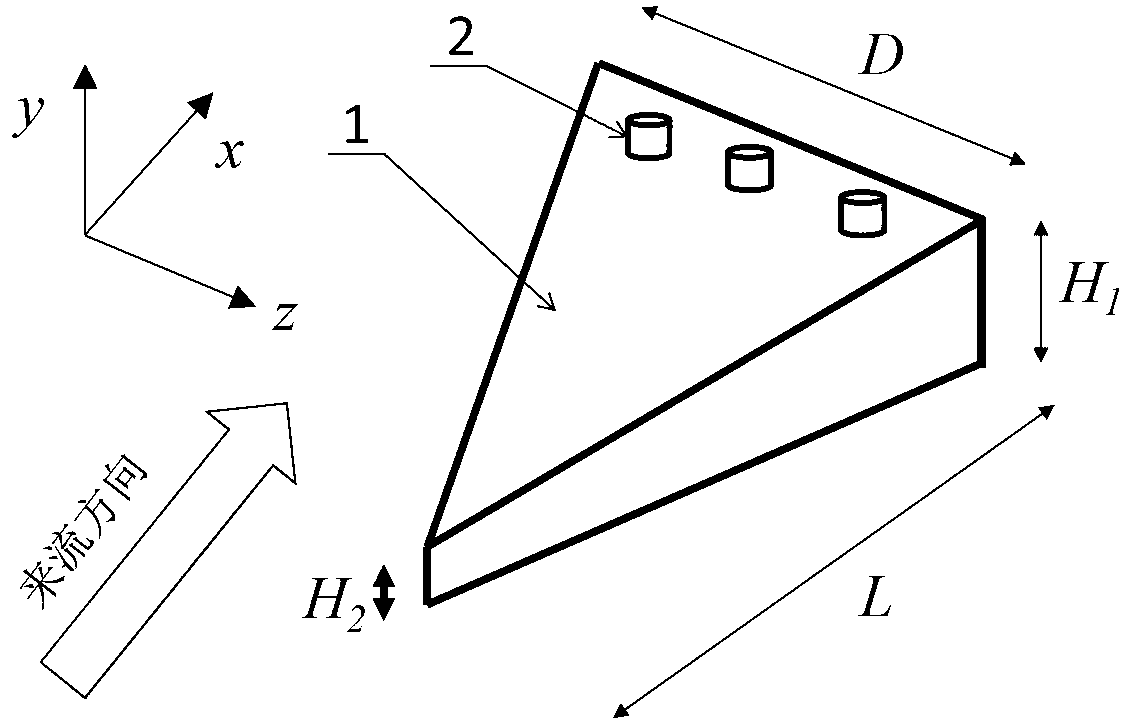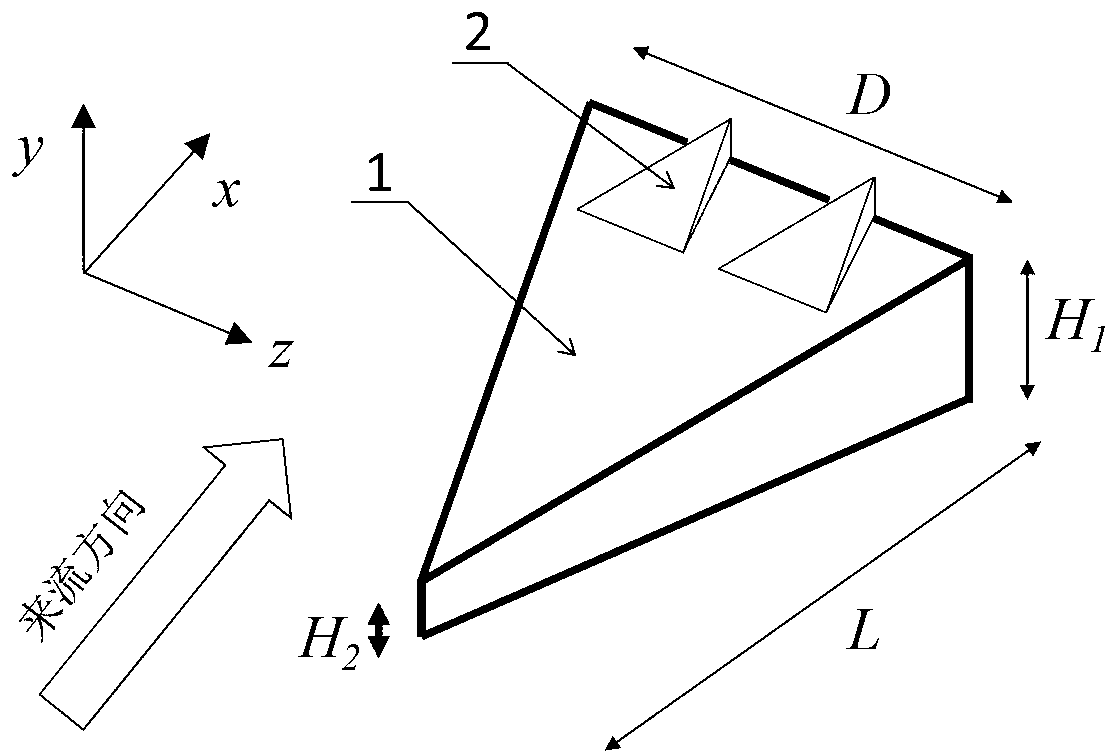Device for controlling flow separation caused by interference between high-Mach-number shock waves and boundary layers
A boundary layer and shock wave technology is applied in the field of devices for controlling the separation of shock waves and boundary layer interference flow, which can solve the problems of strong shock wave resistance, good eddy disturbance, and the inability of vortex generators to generate, so as to increase the resistance to The effect of reverse pressure strength, anti-interference strength enhancement, and turbulence strength enhancement
- Summary
- Abstract
- Description
- Claims
- Application Information
AI Technical Summary
Problems solved by technology
Method used
Image
Examples
Embodiment 1
[0029] Such as figure 1 As shown, the device of this embodiment includes: a base splitter wedge 1 and a trailing edge miniature vortex generator 2, wherein: the base splitter wedge 1 of the backward wedge-shaped structure is arranged at the front end of the shock wave and the boundary layer interference zone with a distance of ( Specifically, the distance from the trailing edge of the splitter wedge to the incident point of the shock wave) is less than or equal to the thickness of three boundary layers, and the trailing edge micro-vortex generator 2 is arranged at the trailing edge of the base splitter wedge 1 .
[0030] The height H of the front and rear edges of the base splitter wedge 1 2 、H 1 And the width D and length L respectively satisfy: 0≤H 2 ≤H 1 ≤δ; 2H 1 ≤D≤5H 1 ;4H 1 ≤L≤10H 1 ; Where: δ is the thickness of the incoming flow boundary layer.
[0031] Such as figure 1 As shown, the trailing edge micro-vortex generator 2 in this embodiment adopts three vortex...
Embodiment 2
[0035] Such as figure 2 As shown, the difference between this embodiment and Embodiment 1 is that: the trailing edge miniature vortex generator 2 adopts two vortex generating units 2 axially vertical, that is, arranged in a single row along the Z-axis direction; and the vortex generation Unit 2 adopts a forward-leaning wedge structure.
[0036] The technical requirements for the shape and structure of the vortex generating unit 2 are as follows: the trailing edge height h, width d and length l of the vortex generating unit 2 respectively satisfy: 0≤h≤0.3H 1 ; h≤d≤2h; h≤l≤3h.
[0037] The control effect of this embodiment under the condition of high Mach number is similar to that of Embodiment 1.
Embodiment 3
[0039] Such as image 3 As shown, the difference between this embodiment and Embodiment 1 is that: the trailing edge miniature vortex generator 2 adopts two vortex generating units 2 axially vertical, that is, arranged in a single row along the Z-axis direction; and the vortex generation Unit 2 adopts a reclining wedge structure.
[0040] The technical requirements for the shape and structure of the vortex generating unit 2 are as follows: the front edge height h, width d and length l of the vortex generating unit 2 respectively satisfy: 0≤h≤0.3H 1 ; h≤d≤2h; h≤l≤3h.
[0041] The control effect of this embodiment under the condition of high Mach number is similar to that of Embodiment 1.
PUM
 Login to View More
Login to View More Abstract
Description
Claims
Application Information
 Login to View More
Login to View More - R&D
- Intellectual Property
- Life Sciences
- Materials
- Tech Scout
- Unparalleled Data Quality
- Higher Quality Content
- 60% Fewer Hallucinations
Browse by: Latest US Patents, China's latest patents, Technical Efficacy Thesaurus, Application Domain, Technology Topic, Popular Technical Reports.
© 2025 PatSnap. All rights reserved.Legal|Privacy policy|Modern Slavery Act Transparency Statement|Sitemap|About US| Contact US: help@patsnap.com



